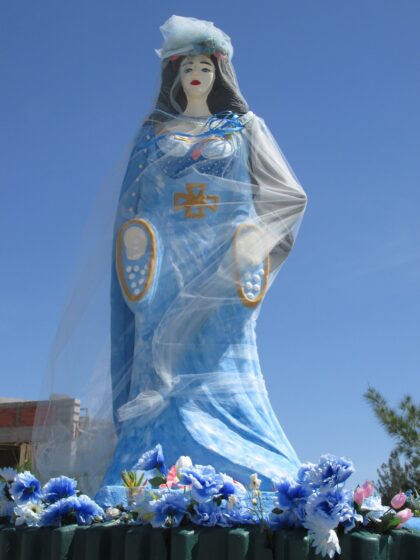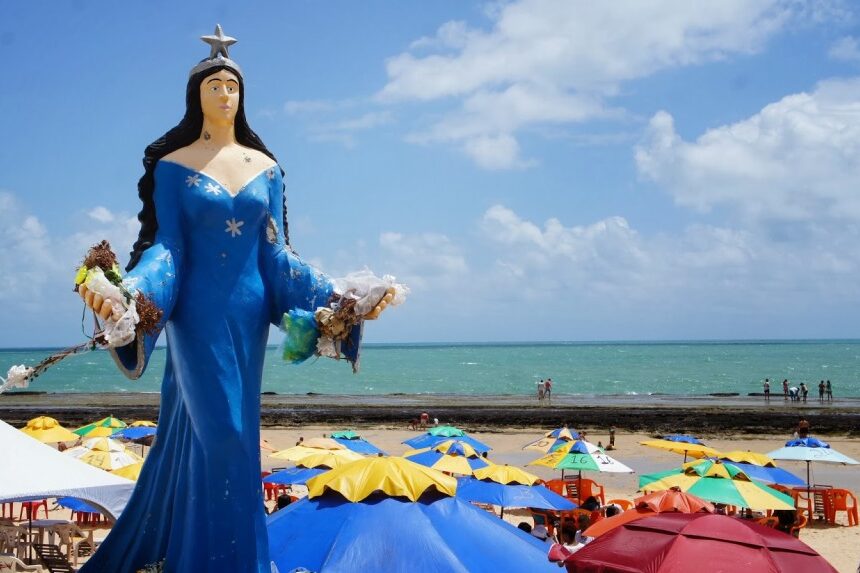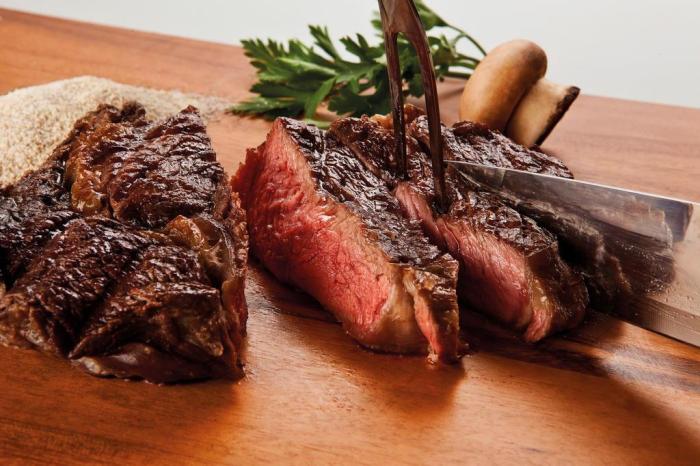By Paul H. Mason
 Flower petals wash up against the shoreline along the Oceanica Ave. There is an unpredictable swell in the ocean but the skies are blue. The sound of a distant crowd carries across the quiet streets of Salvador da Bahia. The Festival of Iemanjá is well under way.
Flower petals wash up against the shoreline along the Oceanica Ave. There is an unpredictable swell in the ocean but the skies are blue. The sound of a distant crowd carries across the quiet streets of Salvador da Bahia. The Festival of Iemanjá is well under way.
Iemanjá, the Goddess of the sea, is a fecund symbol of fertility worshipped among communities all along the coastline of Brazil. She is the archetypal symbol of motherhood and the patron saint of fishermen. Ceremonies in her honor are observed all year round but particularly near the beginning of the year.
Along the south central coast, Iemanjá is a prominent figure in the syncretism of Umbanda religion. In the Northeast, she is an Orisha, a nature Goddess, a divinized African ancestor worshipped by the followers of Candomblé. Iemanjá can be depicted as a seductive mermaid, a buxom African woman, and even the Mother Mary. Under many different names and forms -Iemanjá, Yeye oman ejá, Inaê, Janaína, the Siren Mukunã, Kaiala, Dadalunda, Dona Maria -the Queen of the Sea receives pilgrims from all across Brazil. Along Urca beach in Rio de Janeiro, ceremonies dedicated to Iemanjá are observed at the end of the year or at the turn of the New Year. In Salvador da Bahia, Iemanjá is honored and celebrated on February 2, and on other dates at Lagoa do Abaeté, Dique and Itapagipe.
During the Candomblé-inspired Festival of Iemanjá in Rio Vermelho, ritual offerings are brought out to sea and submerged in the ocean. Crowds gather along the beachfront to celebrate the occasion and witness the festival. At the Casa do Peso, worshippers present gifts in baskets. The presents include fresh and artificial flowers, perfumes, coins, small mirrors, combs, cosmetic tools, dishes of carefully prepared foods, soap wrapped in cellophane, letters of supplication, dolls, pieces of fabric, necklaces, bracelets, and other presents to please this powerful and alluring woman. Concerns about the human impact on nature have left some groups wary of non-biodegradable gifts.
 Ordained Mothers and Fathers of the religion of Candomblé conduct the events with ritual song accompaniment. They oversee the filling of the baskets, the embarkation, and the launching of gifts out to sea. If the gifts submerge, it signifies that Iemanjá has accepted the gift and gives her protection to her devotees. If the waves wash the gift back to the shore, it is a sign of bad tidings.
Ordained Mothers and Fathers of the religion of Candomblé conduct the events with ritual song accompaniment. They oversee the filling of the baskets, the embarkation, and the launching of gifts out to sea. If the gifts submerge, it signifies that Iemanjá has accepted the gift and gives her protection to her devotees. If the waves wash the gift back to the shore, it is a sign of bad tidings.
The Festival of Iemanjá is an important occasion for the affirmation of cultural patrimony, the negotiation of regional identity, and the creation of an Afro-Brazilian national image. Although only a minority of Brazilians claims to be practitioners of Candomblé, the festival of Iemanjá attracts an astounding number of pilgrims and tourists from near and afar.
The improvised art of Capoeira is inevitably found somewhere during the festival of Iemanjá. Gatherings of capoeiristas (capoeira players) can be impulsive, and impromptu performances sometimes precipitate among the crowds on the street. The sound of the berimbal can carry across the throng. Onlookers are attracted to vibrant and eclectic performances.
Grupo Nzinga is a capoeira group located near the beach of Rio Vermelho in the Alto da Sereia (Mermaid’s peak). Since 2005, Grupo Nzinga has participated in the Festa de Iemanjá. They perform capoeira, samba de roda and have their own procession of offerings. Each year they carry a basket of gifts from their academy to the beach of Rio Vermelho. During the performances and procession, they sing songs dedicated to Iemanjá and celebrate her as a symbol of feminism.
Environmentalist concerns have driven Grupo Nzinga to develop a slogan for their participation in the Iemanjá festivities: “Iemanjá protégé a quem protégé o mar” (Iemanjá protects those who protect the sea) – an incentive campaign to promote biodegradable gifts to Iemanjá instead of those that pollute the sea. This anti-pollution campaign meets with some disagreement among various traditionalist communities who observe the celebrations. Opponents claim that it is wrong to stray from tradition. For these traditionalists, the ceremonies should remain as they have always been; replacing the gifts that Iemanjá enjoys is out of the question; tradition must be maintained and religion should be respected.
Can there be a middle-ground? Some argue that Candomblé exists to protect nature and that people can offer fried fish, fruits of the season, remove plastic from gifts and replace non-biodegradable objects with paper replicas. For these people, what are important are the symbol and not the object.
The pedagogical coordinator for Grupo Nzinga, Lígia Vilas Boas, explains that “the academy’s objectives are to introduce a preoccupation with marine pollution.” We can hope that their campaign has an impact on traditions more than 100 years old. To read an interesting article about other Orixas we recommend you to check this article HERE.













